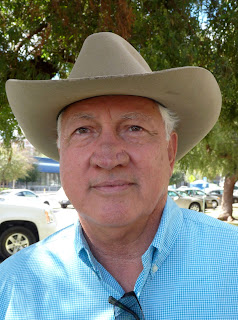WEST SIDE IS AMAZING—JUST NEEDS WATER!
A West Side Farmer Has a Simple Message
 |
| Joe Del Bosque |
Joe Del Bosque, a West Side Fresno County diversified farmer posted this on his Facebook page on Tuesday.
“Went to have breakfast in Firebaugh this morning at Giant Burger, who makes the best breakfast burritos and pancakes anywhere. While quietly eating my breakfast, I watched the traffic passing through one of only two signal lights in this little town of 5000,” said Del Bosque.
“During the 30 or so minutes I saw trucks carrying cantaloupes, honeydews, red tomatoes, green tomatoes, onions, almonds, pistachios, grain, almond hulls, wine grapes, fertilizers, alfalfa hay, farm equipment, and enclosed trailers and sea-going containers carrying finished products.”
“This little town is the amazing! All it takes is water,” Del Bosque said!














